Browse using the new Vinous website now. Launch →
Printed by, and for the sole use of . All rights reserved © 2015 Vinous Media
The Exquisite 2021 Brunellos
BY ERIC GUIDO | NOVEMBER 20, 2025
Writing about Italian wine hasn’t been easy these last two years given the challenges of a series of difficult growing seasons across the peninsula. When it comes to Montalcino, I’m always simultaneously tracking as many as four vintages, each at its own stage in evolution from fermenter to bottle. One vintage that has truly proven itself is 2021. There is something magical about the 2021 Brunellos. The wines offer both near-term appeal and the balance to mature over the next 15 to 20 years. These are structured, youthfully tense wines, but it’s not difficult to find pleasure in them today.
Many winemakers compare the 2021s to the 2015s, but I find the 2021s to be more balanced than the 2015s were upon release. The young 2015s seemed to be all about intensity, boasting a core of opulent fruit that made them attractive in their youth, yet lacking finesse. The 2021s are all about grace, vibrancy and purity. They also exhibit a beautiful sense of place, something that the wines from other warm vintages like 2011, 2012, 2015 and 2020 struggled to achieve. The 2021 vintage was not without its hiccups, but overall, it is remarkably successful.
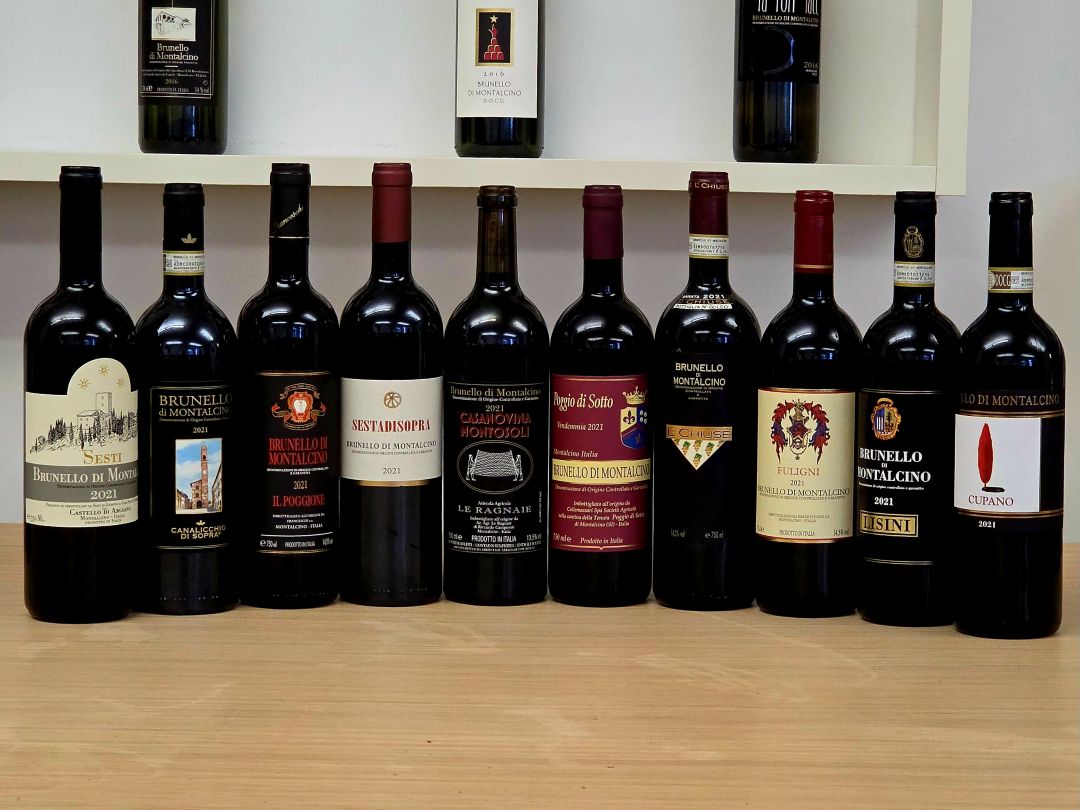
The 2021 Brunellos are successful across the entire region.
2021: The Vintage Montalcino Needed
Stated simply, 2021 is a triumph for Montalcino. Many of the 2020 Brunellos I tasted last year failed to impress. It’s a vintage where site location and decisions in the winery were integral to success. The wines were either incredibly great or forgettable. The warm and arid 2022 vintage delivered Rossos that are unpleasantly concentrated and high in alcohol, which does not bode well for the 2022 Brunellos. The 2023 vintage may have yielded very high quality, but a Peronospora (downy mildew) outbreak in the spring drastically limited yields, and ultimately, the availability of the wines. Many producers didn‘t make any single-vineyard wines or declassified most of their juice.
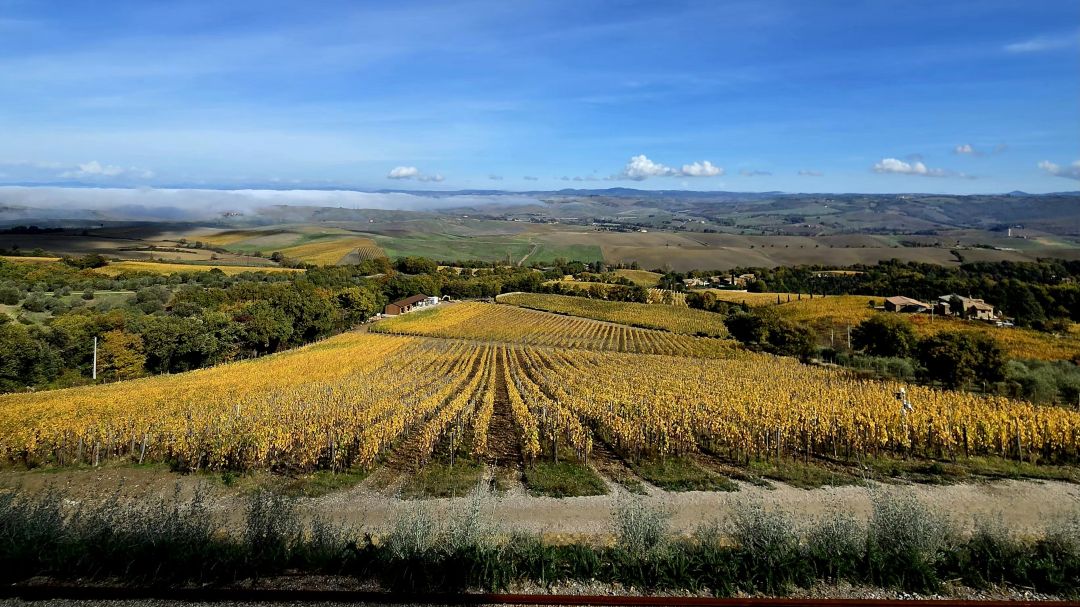
The newly constructed Cerbaiona vineyard.
The 2021 Brunellos, on the other hand, are vibrantly fruit-forward, with highly expressive bouquets and crisp, crunchy textures. Their concentration and depth create a saturating tension that’s beautifully balanced by lively acidity, the saving grace for this warm vintage. The 2021s excel across the entirety of Montalcino, suggesting comparisons to 2019 and 2016, but they fall slightly short of those two outstanding seasons, just lacking the posture for extra-long-term maturation (as in 20-plus years). That said, the early appeal of the 2021s shouldn’t be seen as a drawback, as their apparent inner harmony in the early going promises a broad and open drinking window, along with positive development over the coming decade or more.

Francesco Ripaccioli of Canalicchio di Sopra in his Montosoli vineyard.
The 2021 vintage also yielded wines of extremely high quality in the entry-level Brunello category, meaning that there will be plenty of excellent, affordable wines to choose from. Readers should note that there is also a higher-than-usual percentage of these wines that come across as open-knit, bright and juicy in style, seemingly more in line with high-end Rosso than Brunello. This may be a function of producers’ choices to craft early-drinking wines, or that some estates that suffered frost damage early in the season ultimately included fruit from secondary shoots in the wines.
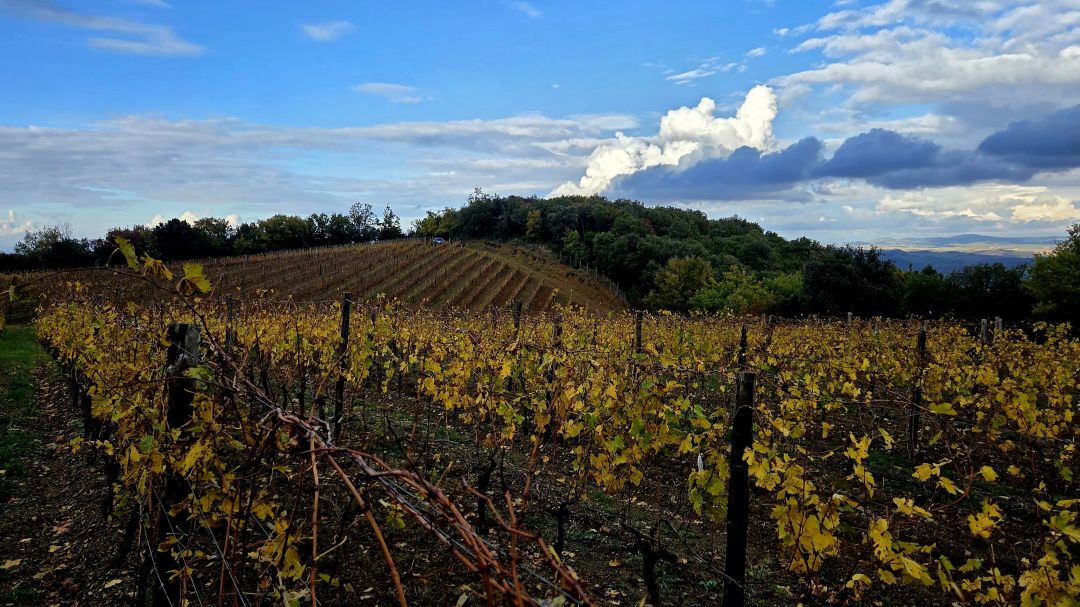
Fonterenza's Vigna del Bosco vineyard in the southeast of Montalcino.
The 2021 Growing Season
Frost on April 7 and 8 was a defining event of the year, as it naturally reduced yields. This frost was a significant issue for vineyards at lower elevations with water-retaining clay soils, such as in Montalcino’s northeast. The remainder of the season played out with warm and dry temperatures through the summer, which kept disease pressure low. Despite a heatwave between August 12 and 16, heat was never severe. Maturation never stalled, a benefit of lighter crops on the vine. Ripening was further aided by two well-timed rains: a smaller episode at the end of July and another at the end of August. September temperatures moderated beautifully, alternating between warm days and cool nights, which helped the fruit retain acidity. Depending on timing, producers were able to allow the fruit to come to ideal ripeness without the risk of disease. This led to a generally healthy harvest that tracked with historical averages.
The 2021 vintage is one to be excited about. These wines will surely earn a place in my own cellar. It’s a modern classic that will inspire Sangiovese lovers to dig deeper into Montalcino.
The Tumultuous 2020 Riservas
The 2020 Riservas are far less consistent. After tasting the 2020 Brunellos, I wondered how many producers would opt to make a Riserva in such an unusual year. The 2020 growing season was hot, yet not as dry as 2019 or 2021. But an extended lack of rain during the higher-temperature summer months caused vines to shut down. Rain in late August helped reinstate some balance, but the fruit was already heavily affected. The threat of rain in late September prompted some producers to pick before phenolic maturity.
The 2020 vintage yielded uneven results across Montalcino. It’s a vintage that exemplifies the need for zoning and subregions to help guide consumers, as some areas had significantly different outcomes (the southeast, for example, enjoyed a cool and extended harvest). Readers will need to be selective. The wines boast ripe, fruit-driven personalities and high alcohol, which often pushes them out of balance. Yet where producers managed the season well, the wines can be remarkable. One of my highest-scoring wines to date is Il Marroneto’s 2020 Brunello di Montalcino Madonna delle Grazie Riserva.
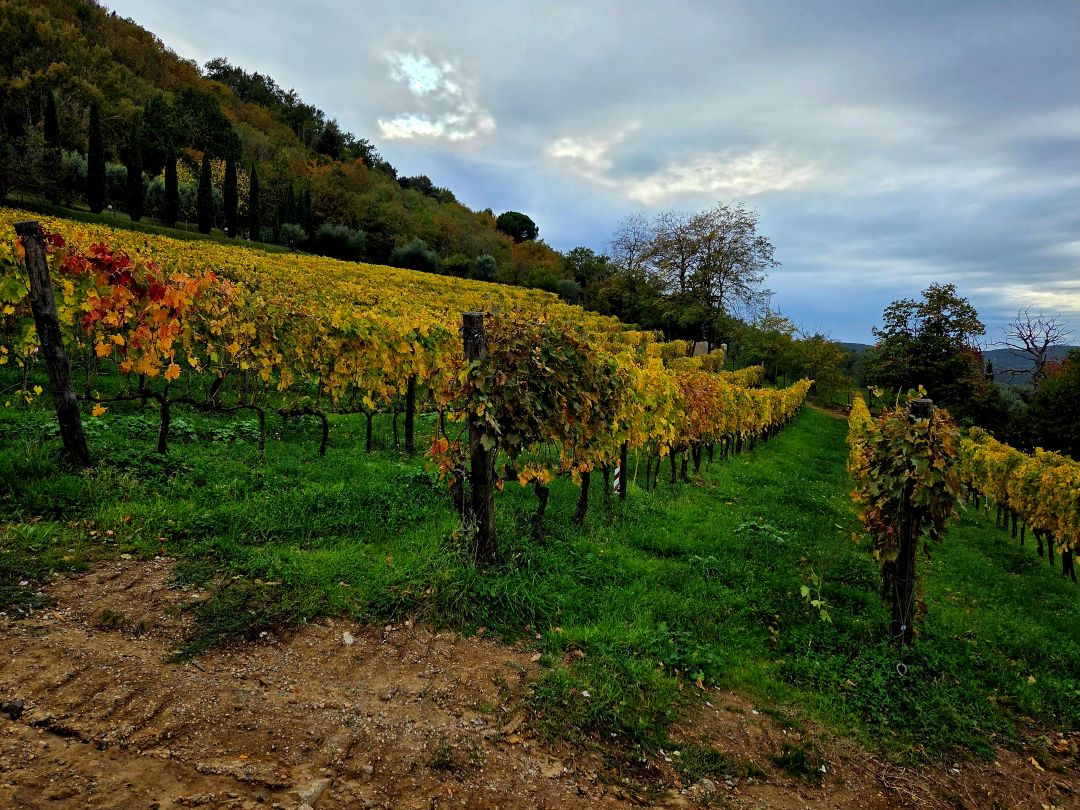
Il Marroneto’s Madonna delle Grazie vineyard once again delivered dramatically beautiful wines in 2020 and 2021.
Still, many of the 2020 Riservas disappoint. Success in a year like 2020 often hinges on bottling date. While the Riserva category requires that producers hold a wine in their cellar for an extra year before release, no law mandates that the wine spend that extra year in oak. This means an estate can bottle its Riserva and Brunello simultaneously and simply release the Riserva a year later. With few exceptions, many of the traditionally made 2020 Riservas lack vibrancy or show dried-out fruit from extended time in wood. In many cases, I prefer producers’ 2020 Brunellos to their 2020 Riservas.
Brunello Forma: A New Approach to Rating Vintages
One of the most significant developments in Montalcino is the removal of the five-star vintage-rating system employed by the Consorzio since 1945, which I touched on in last year’s report. This is a positive change, as the system was inherently flawed. An organization cannot rate its own vintages without a conflict of interest. How could one realistically expect the governing body of Montalcino to call out a bad vintage and essentially condemn the region to dismal sales for its current releases? This change represents a progressive approach and signifies that Montalcino has matured.
The objective evaluation of a vintage now rests fully on the shoulders of journalists and critics, removing inherent biases that may or may not have been present while the star system was in place. The retirement of the five-star system reemphasizes the necessity for the media to do their due diligence in truly understanding the region and properly communicating their findings to the consumer. This will only benefit Montalcino in the end.

Sunrise over the vineyards around Passo del Lume Spento, a hotspot of new, high-elevation plantings in Montalcino.
The replacement for the five-star system has been introduced as Brunello Forma: a collaboration between the Consorzio and Gabriele Gorelli MW that will debut at this year’s Benvenuto Brunello. Drawing on data from over 60 weather stations, including temperature ranges, precipitation, drought frequency and heatwave occurrences, Brunello Forma will offer a detailed analysis of each vintage, allowing users to compare current vintages with those from over a decade ago. This will all be incorporated into a map of the region. Based on what I’ve seen so far, the system lacks a breakdown by subregions or quadrants, as well as data regarding budbreak, flowering and harvest dates, but this is still being considered.
After Gorelli and a panel of sommeliers from around the world taste the wines, the Consorzio will provide a summarizing statement about each vintage in lieu of a star rating. This statement will aim to encapsulate the vintage in a short phrase that will help consumers have an idea of what to expect. With all due respect, this is nothing more than a marketing effort that will only appeal to those who used the five-star rating system as a selling point.
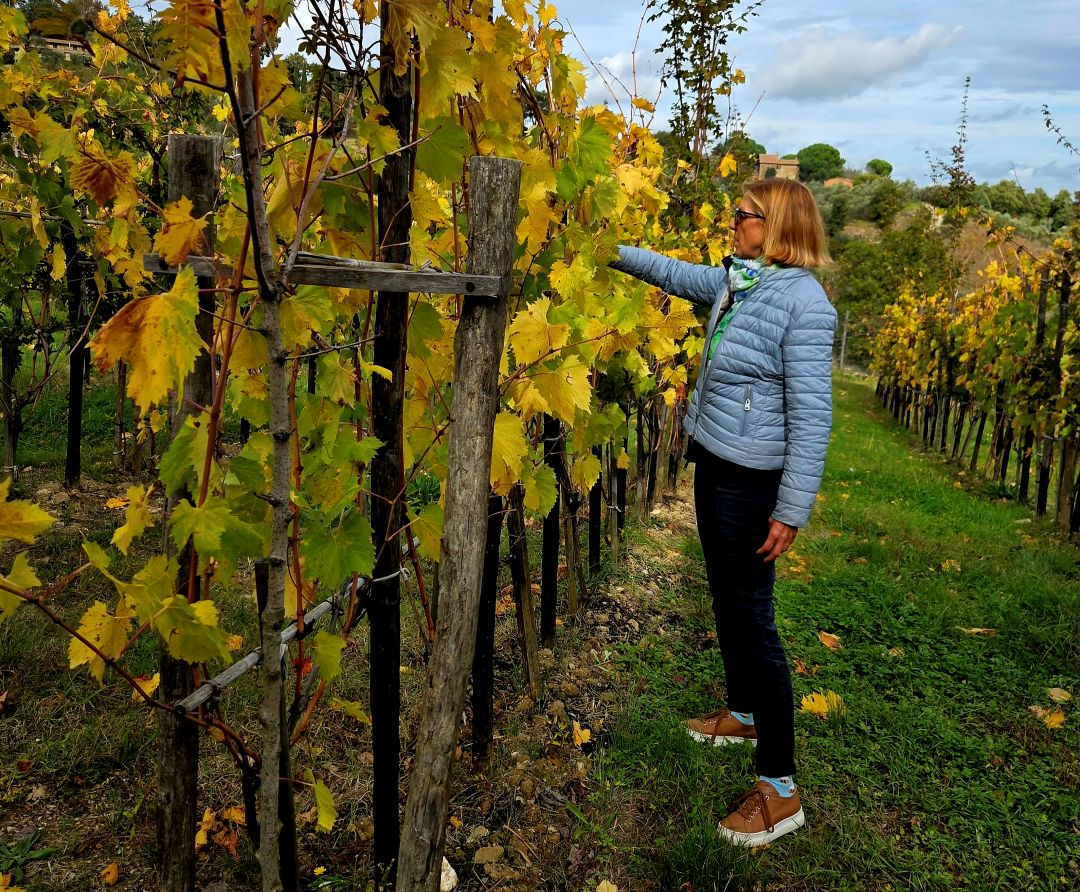
Caroline Pobitzer of Pian dell'Orino in their Vite Maritata (Married Vines) vineyard.
Defining the Essence of Montalcino
This brings me to the issue I continue to champion: Montalcino needs to establish meaningful subregions. A recent conversation I had with a local generational winemaker/influential figure echoed a widely embraced position on this matter: the idea that the phrase “Brunello di Montalcino” is more important than any one producer or place. This is why “Brunello di Montalcino” has traditionally been displayed prominently on labels. It’s the result of a collective effort made by the entire region since the mid-twentieth century.
While a critic's job is to rate wines and vintages, it is also our role to objectively critique a region and help it understand where improvements can be made. Looking at wine in a global context, consumers and trade buyers alike are increasingly focused on wines of place, wines that can only be made in very specific locations. This is what drives appreciation in the short term and then value in the long term. It’s how sommeliers in the best restaurants around the world build their lists.
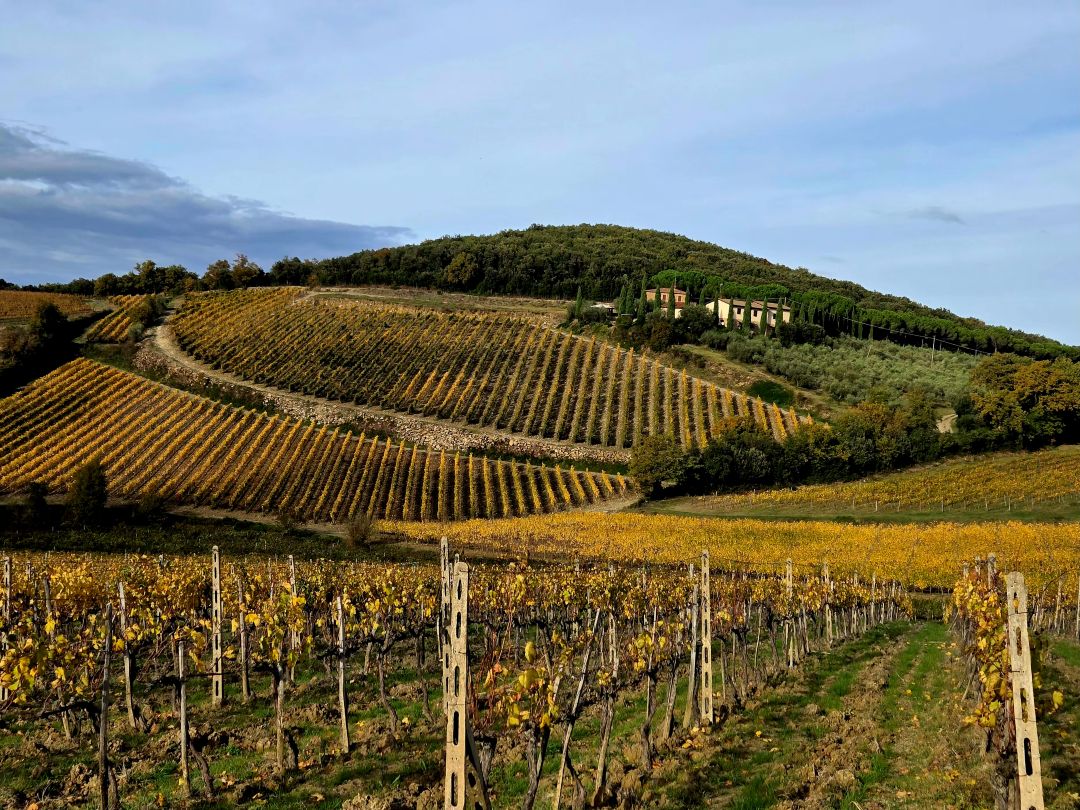
Looking across the Livio Sassetti - Pertimali vineyards toward Montosoli.
Montalcino is one of Italy’s most historic appellations. Producers have a choice to either control their narrative by formally defining subzones that all lovers of these wines know exist, or accept that an outside party will do it for them. Moreover, the failure to do this important work places Montalcino squarely behind regions like Chianti Classico and Nobile di Montepulciano that are aggressively promoting the diversity of their regions. Change can be uncomfortable, but defining the subzones of Montalcino is essential for the region to move forward in the world of the future. I look forward to a day when we can examine a vintage from the perspective of how conditions impacted specific areas within Montalcino, to a day when thematic tastings can be organized around those areas in the way they are for the other great regions throughout the world.
I tasted the wines for this report during my visit to Montalcino in October 2025. Several reference-point producers did not have new releases to show, including Biondi-Santi and Stella di Campalto. The wines of Valdicava and Ciacci Piccolomini d'Aragona will be updated to the report when they are released in early 2026
© 2025, Vinous. No portion of this article may be copied, shared or redistributed without prior consent from Vinous. Doing so is not only a violation of our copyright but also threatens the survival of independent wine criticism.
You Might Also Enjoy
A Tale of Two Extremes: The 2020 Brunellos and 2019 Riservas, Eric Guido, November 2024
The Magic of 2022 Rosso di Montalcino, Eric Guido, September 2024
Buckle Your Seatbelts: 2019 Brunello and 2021 Rosso di Montalcino, Eric Guido, December 2023
The Rise of Rosso di Montalcino, Eric Guido, October 2022
The Pros and Cons of Rosso di Montalcino and Beyond, Eric Guido, January 2022
Show all the wines (sorted by score)
- Agostina Pieri
- Alessandro Rossi - Camponovo
- Altesino
- Aminta
- Antinori - Pian delle Vigne
- Argiano
- Armilla
- Banfi
- Baricci
- Boscoselvo
- Camigliano
- Campogiovanni
- Canalicchio di Sopra
- Canneta
- Capanna
- Caparzo
- Caprili
- Carpineto
- Casanova delle Cerbaie
- Casanova di Neri
- Casanuova delle Cerbaie
- Castello Finoto
- Castello Finoto - Palazzo Rivolo
- Castello Romitorio
- Castello Tricerchi
- Castiglion del Bosco
- Cava d'Onice
- Celestino Pecci
- Centolani
- Cerbaia
- Cerbaiona
- Claudia Ferrero
- Coesioni
- Col d'Orcia
- Col d’Orcia
- Collemattoni
- Collosorbo
- Conti Marone Cinzano
- Cortonesi
- Costanti
- Croce di Mezzo
- Cupano
- Donatella Cinelli Colombini
- Donna Olga
- Elia Palazzesi
- Fanti
- Fattoi
- Fattoria di Barbi
- Fonterenza
- Franco Pacenti
- Fuligni
- Gianni Brunelli Le Chiuse di Sotto
- Giodo
- Gorelli
- Il Marroneto
- Il Palazzone
- Il Poggione
- Innocenti
- La Casaccia di Franceschi
- La Colombina
- La Fiorita
- La Gerla
- La Magia
- La Poderina
- La Serena
- La Torre
- Lazzeretti
- Le Chiuse
- Le Colline - M.L. Fioretti
- Le Macioche Famiglia Cotarella
- Le Potazzine
- Le Ragnaie
- Lisini
- Livio Sassetti - Pertimali
- Luciani
- Marchesi Frescobaldi
- Mastrojanni
- Máté
- Mocali
- Padelletti
- Palazzo
- Patrizia Cencioni
- Piancornello
- Pian della Querci
- Pian delle Querci
- Pian dell'Orino
- Pieve Santa Restituta
- Piombaia
- Podera Scopetone
- Podere Brizio
- Podere del Visciolo
- Podere Le Ripi
- Poggio alle Forche
- Poggio Alle Forche di Turchi Lorenzo
- Poggio dell'Aquila
- Poggio di Sotto
- Poggio Landi
- Poggio Nardone
- Renieri
- Ridolfi
- Ruffino
- Salicutti
- Salvioni
- Sancarlo
- San Lorenzo
- Santa Giulia
- Sasso di Luna
- Sasso di Sole
- Scopone
- Sesta di Sopra
- Sesti - Castello di Argiano
- Siro Pacenti
- Soldera
- Talenti
- Tassi
- Tenimenti Ricci
- Tenuta Buon Tempo
- Tenuta di Collosorbo
- Tenuta di Sesta
- Tenuta Luce
- Tenuta Poggio Il Castellare
- Tenuta San Filippo
- Tenuta San Giorgio
- Tenute Donna
- Tenute Silvio Nardi
- Terre Nere Campigli Vallone
- Tiezzi
- Uccelliera
- Val di Suga
- Villa Al Cortile
- Villa I Cipressi
- Villa Poggio Salvi
- Voliero
